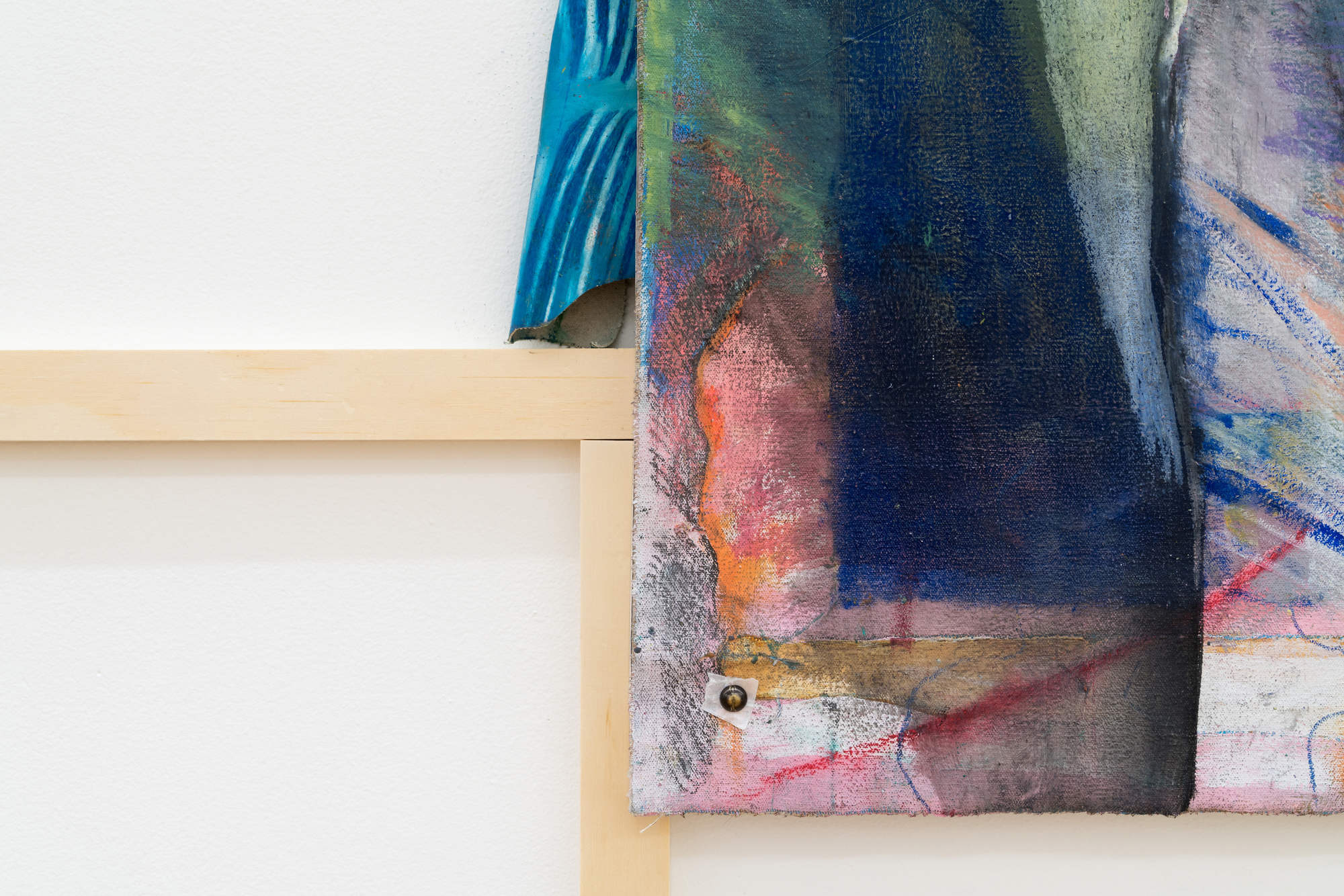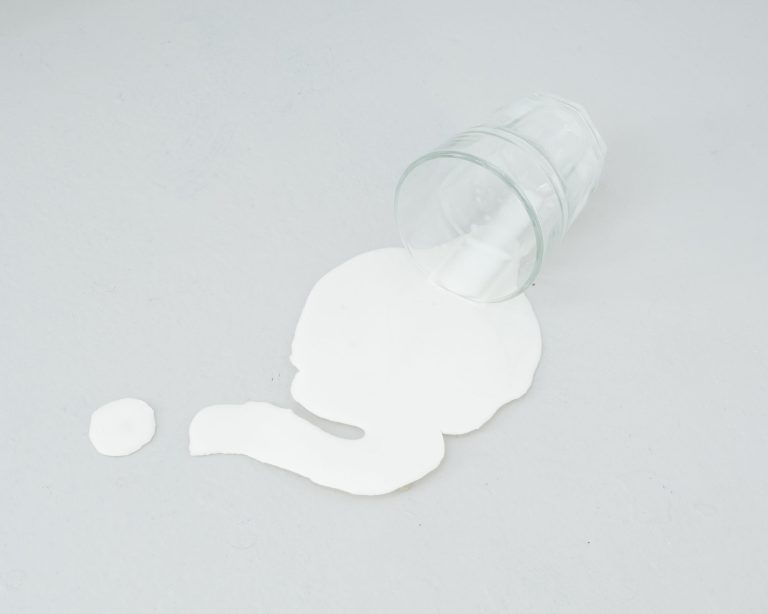Artists: Laurie Kang and Katie Lyle
Exhibition title: Fascia Lines
Venue: Projet Pangée, Montreal, Canada
Date: August 30 – October 6, 2018
Photography: Jean-Michael Seminaro / all images copyright and courtesy of the artists and Projet Pangée, Montreal
Montreal, August 21, 2018 — Projet Pangée is pleased to present Fascia Lines, a duo exhibition by Toronto-based artists Laurie Kang and Katie Lyle.
“Laurie, Katie—
Lately, I’ve been speaking with you both about how you tend to work on the floor. That is, you’re making images horizontally; with your eyes turned downwards and a curve in each of your spines. Katie, I can picture you sitting with pieces of loose canvas, legs extended in what’s almost a ninety-degree angle, adding new layers in paint. Laurie, perhaps you’re crouched or kneeling, treading back and forth around a large piece of photographic paper, spilling and spreading darkroom chemicals in wide arcs. As for me, I’m cross-legged on the carpet, laptop balanced on my thighs, some extra notes and papers near my left elbow. My right foot is falling asleep.
What remains in your bodies after a long day of work in the studio? Of course, there’s no start or end to this—to your work or mine. Do you know this idea of the “small dance,” from the choreographer Steve Paxton? It’s the dynamics of alignment and flow we enact in our bodies, even in moments of so-called perfect stillness. We’re in a constant state of adjustment and balancing; an infinite micro-choreography. So, when you’re working in the studio, when you’re biking around the city, when you’re sleeping, when you’re reading, when you’re eating—these movements aren’t distinct, but continuous, connective. They stretch, bend, and contract, they constitute one another—it’s an ongoing dance.
Laurie, Katie—how do your floors support you, what postures do they prompt? What kinds of images get made in that proximity, that curving-over, that encircling of arms and legs? I feel a sense of ongoingness in your respective practices—they are filled with gestures that are never finished. More layers are to be cut out and worked through, new tones will emerge under reactive chemicals and light. There are new support systems to stretch and fold across; new skeletons for new skins.
I’ve gotten up from the floor—I took a break to stand in my kitchen and chop some vegetables. Now I’m sitting at a desk, left leg crossed over the right. I’m taking notes about fascia and touch; I feel a slight stiffness in the back of my neck. Laurie and Katie: all this time, I’ve been carrying our conversations in each of my postures and I know there’s more to come.
Talk soon, xo
Daniella”






















